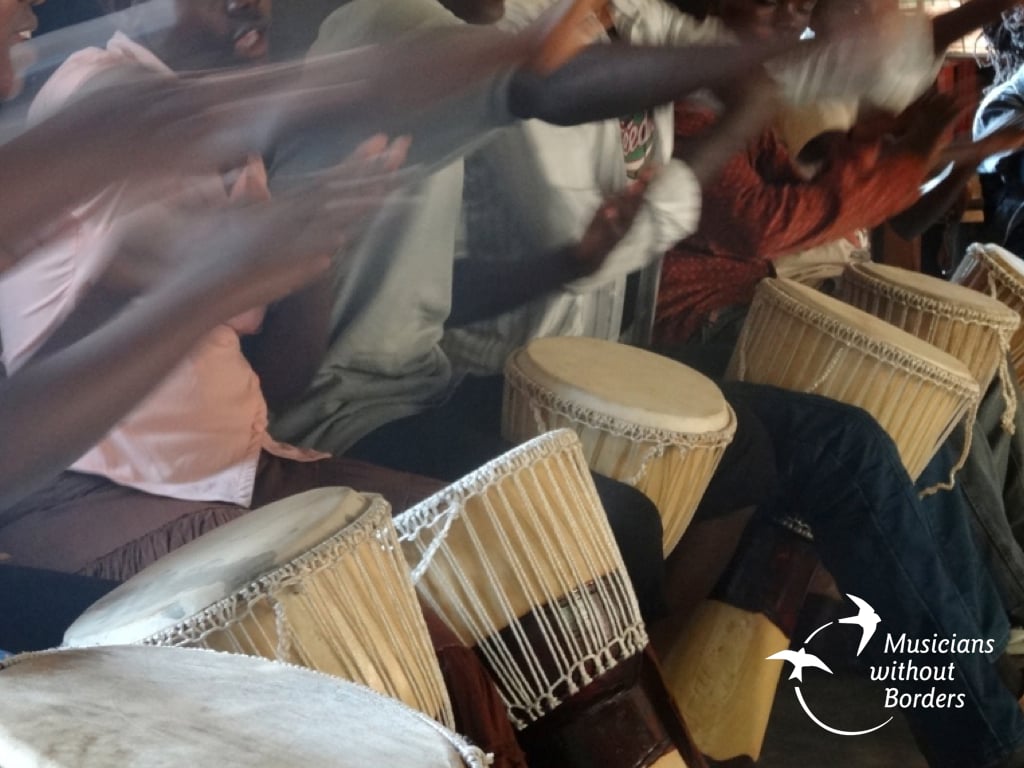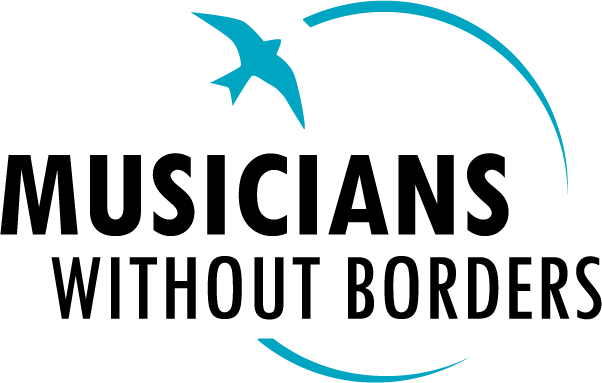by Chris Nicholson
ONE, two and, three and, FOUR, FIVE, six and; ONE, two and, three and, FOUR, FIVE, six and;….
This is Rwanda’s core rhythm:
- Count and clap six straight, equal beats,
- Accent the first, forth and fifth beats,
- Add articulation between those main beats.
Working with groups of children or adults, when I begin this rhythm everyone joins in effortlessly. When I ask people to improvise a rhythm, 90% of times they will answer with this rhythm or a variation of it. In songwriting, many times this is the rhythm that is used, with lyrics phrased to mirror the beats. Traditional dances move to this beat.

This is a shared culture. It is a rhythm that has been experienced by a group of people for their whole lives. It carries the meaning of a shared identity, a shared interaction, and a shared invitation to join in and participate. It contains memories of past events, songs, ceremonies, parties, communities. Those past memories, connections and interactions may not all be happy ones, but they are shared. This shared culture has the power to connect a group of people easily and quickly.
A lot of my work here has to do with isolation and disconnection. The identity of being HIV+ can result in separation from family, friends, and community. It can also result in a disconnect for young patients between their identity before their diagnosis and after, and with their hopes for the future. Any resource that can aid connection is valuable in this context.
As members of a music therapy group enter into a process together, other shared cultures emerge. The group itself develops a culture – one of shared norms, expectations, modes of musical interaction. Group members share their individual musical experiences, and the meanings of those experiences to them. Interests in rap, gospel music, or hip-hop, can speak of an emerging youth culture that gives a generation its own cultural identity and carries its own shared meanings. These cultures can carry the same power to connect people as historically rooted cultures.
In music therapy, and in the work of Musicians Without Borders, we view connection inclusively – we facilitate sharing, understanding and participation in music and its meanings. However, that same affordance of connection can be used for exclusion. Whenever an identity is expressed it distinguishes between one thing and another, potentially connecting members of one group, but excluding others. In a room full of Rwandans dancing and singing, I have felt discomfort as I lacked the knowledge and experience to participate with them. My own foreign-ness felt exaggerated. However, when I have been welcomed and helped to join in, I have felt acceptance and enriched by experiencing something new. I have felt cared for, and as if I have been valued sufficiently to be included. My apparent differences are accepted into the community.
When I hear a drum beating “ONE, two and, three and, FOUR, FIVE, six and;…” I feel the potential in a shared historical, cultural artefact. In a music therapy group it speaks of participation and inclusion. It can be our entry point to interaction. From that point we can explore what our own shared meanings and culture will become.





